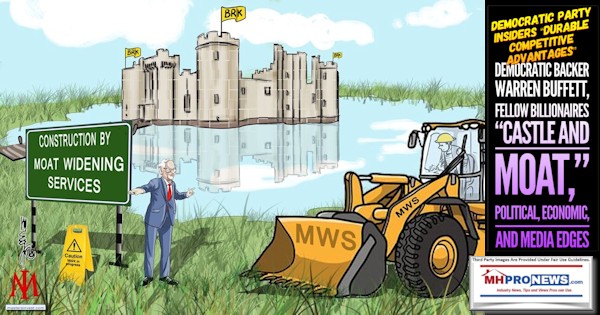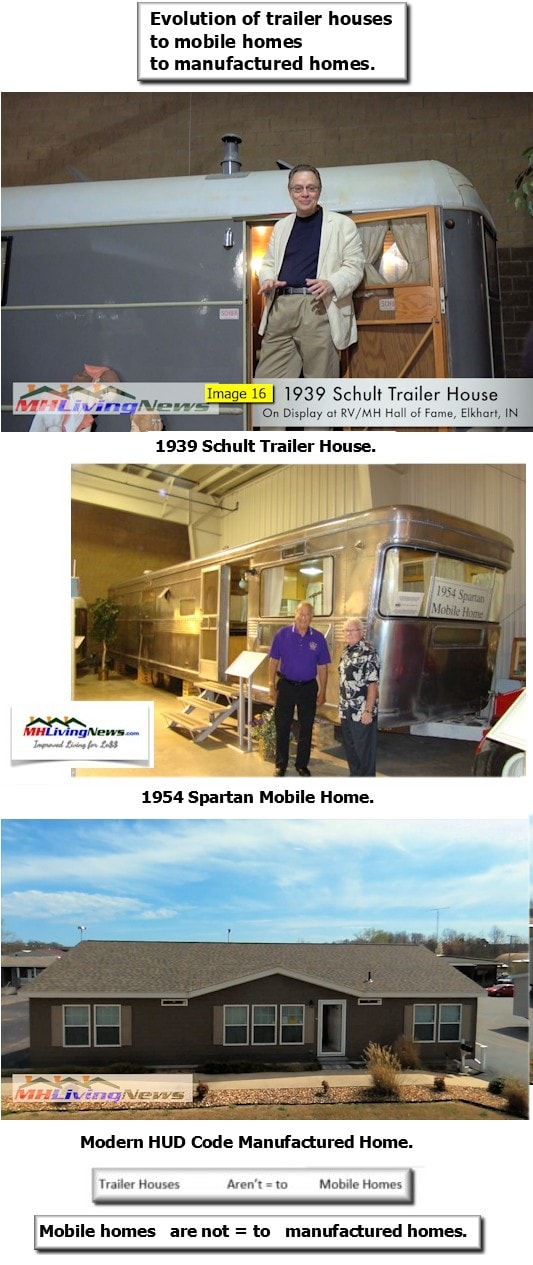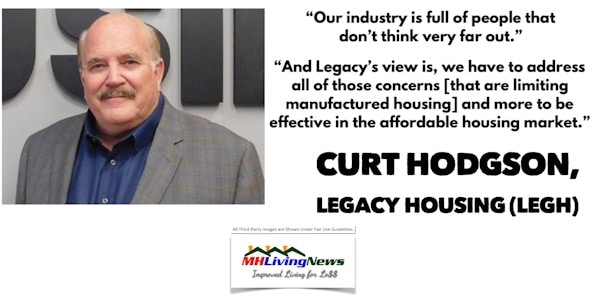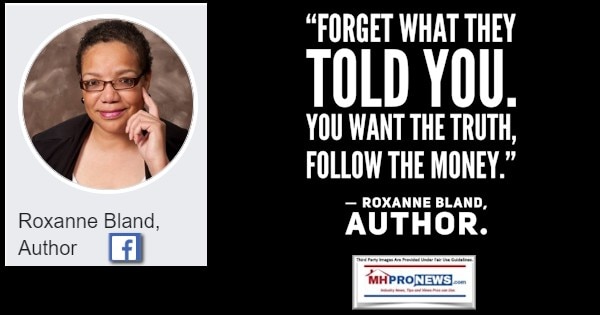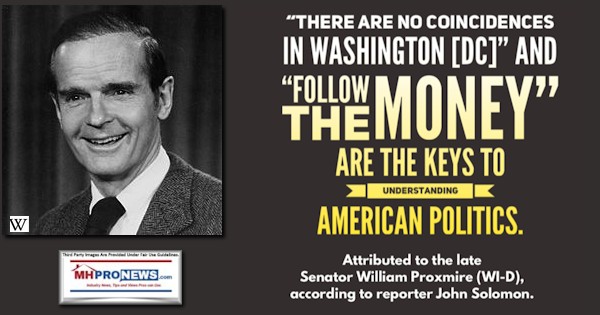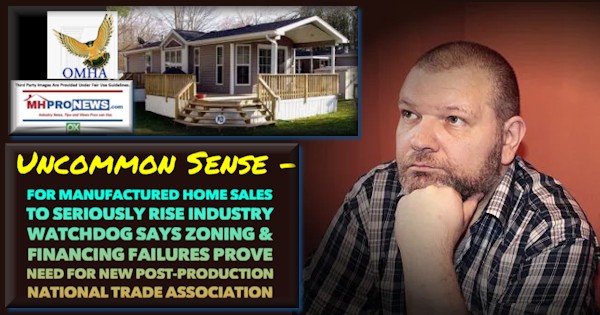
MHProNews was provided the following media release. This manufactured home industry watchdog’s report will be followed by additional information, plus an MHProNews Analysis and Commentary.
DTS AND ZONING FAILURES PROVE DIRE NEED FOR INDEPENDENT NATIONAL POST-PRODUCTION REPRESENTATION

First, as to financing. As is demonstrated in the articles above, the vast majority of manufactured housing consumers remain completely unserved under the so-called “Duty to Serve” (DTS). They thus remain subject to artificially higher interest rates, which make home purchase loans more costly. This, in turn, excludes otherwise qualified consumers from the HUD Code market (and from the housing market altogether), and thus suppresses the production of HUD Code homes. And, while MHARR has done its utmost to highlight the brazen chicanery by Fannie Mae and Freddie Mac that has undermined DTS for twelve years, it is the supposed “national representative” of “all” industry sectors – including, specifically, the post-production sector – which has been little more than a cheerleader for this emasculation of DTS and its wrongful diversion to “hybrid” homes in order to serve the interests of the industry’s largest conglomerates. Meanwhile, the interests of the traditional core of smaller industry businesses have been virtually ignored. The result, as always, has been predictable. A good law for the industry and its consumers has gone – and is going — to waste, while production levels remain mired well below historic industry norms.
And the situation with respect to zoning is no better. Discriminatory zoning restrictions work to effectively exclude mainstream HUD Code manufactured housing from broad areas of the country, while preventing new HUD Code communities from opening, or existing HUD Code communities from expanding. The result is an artificially diminished and restricted HUD Code market, intoto, which necessarily and unavoidably limits the number of HUD Code homes that can be produced and sold, and which, in combination with existing financing discrimination, severely restricts the scope of the HUD Code market – all to the detriment of both consumers and the industry as a whole. Here again, MHARR has – and will continue – to do all that it can, but with national-level representation of the broad cross-section of post-production stakeholders effectively “missing in action,” positive change has been difficult to pursue and achieve.
Worse yet, because of the post-production sector’s meager “representation” at the national level – which focuses primarily on the interests of the industry’s largest conglomerates at the expense of smaller industry businesses — the trend, in both of these areas, has gotten significantly worse over the past decade-plus. Over this period – among other things: (1) significant lenders have exited the HUD Code market or have not returned, due to the absence of secondary market and securitization support; (2) other potential lenders have refused to enter the HUD Code market for the same reason; and (3) originations within the Federal Housing Administration’s (FHA) Title I manufactured housing program have shrunk to almost nothing due, in substantial part to the Government National Mortgage Association’s (GNMA) punitive “10-10” rule. Meanwhile, on the zoning side – among other things: (1) the development of new communities has been severely limited; and (2) the expansion of existing communities has largely been stymied; while (3) existing communities are being sold and re-developed for other purposes at significant pace. The upshot of both trends, ultimately, is a static or shrinking market that is a reflection of discriminatory policies rather than the quality of the homes themselves, which is superior in every respect.
Nor should it be any surprise at all, that both of these major problems have gotten significantly worse for the industry’s smaller businesses and consumers over the last decade-plus, in the absence of an independent national post-production association dedicated to advancing the views and interests of all post-production businesses, rather than just a select few. Prior to 1991, the industry had such an independent post-production national representation, with the National Manufactured Housing Federation. Since that group was absorbed into the Manufactured Housing Institute (an action initiated, promoted and advanced by the industry’s largest corporate conglomerates at that time), however, the post-production sector (unlike the production sector with MHARR) has had no independent national representation, and these core problems, specifically affecting the industry’s post-production sector, have proliferated and become significantly worse, for consumers, for the post-production sector itself, and for the broader industry.
This major representational flaw should be unacceptable to – and rejected by – all industry members. The facts, rather, show that for the industry to grow and expand, and to reach millions of potential new customers, the twin issues of financing and zoning must be effectively addressed and resolved, and, in order to accomplish that, the track record both before and after 1991, shows that an independent national post-production association (as MHARR has consistently called-for) is absolutely necessary.
##
People have a remarkable ability to tune out or ignore facts that run counter to their desired beliefs. Hold that thought, because that is one key to understanding how the status quo is maintained.
Additional Information, MHProNews Analysis and Commentary
First for context, it must be noted that this release from the Manufactured Housing Association for Regulatory Reform (MHARR) was part of a series of releases that specifically names the Manufactured Housing Institute (MHI).
While that clarification is useful for understanding their article, the case can be made that no less important is the understanding of who are the powers behind the MHI veil.
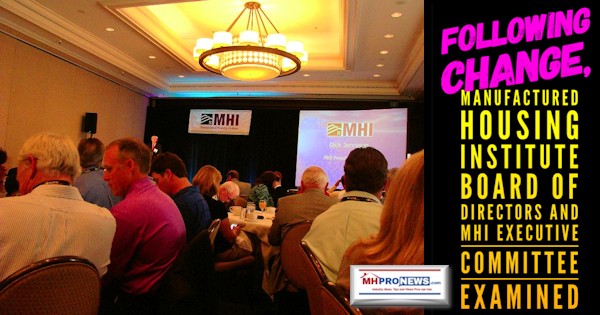
There are no magical insights needed. MHI provides the list. See the report linked above and what flows from it.
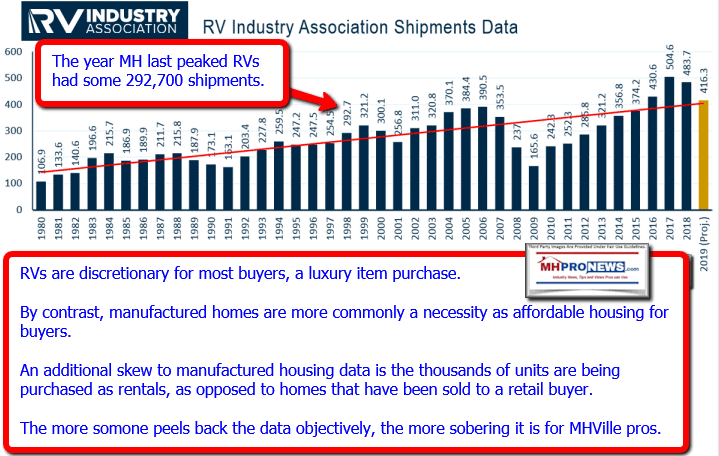
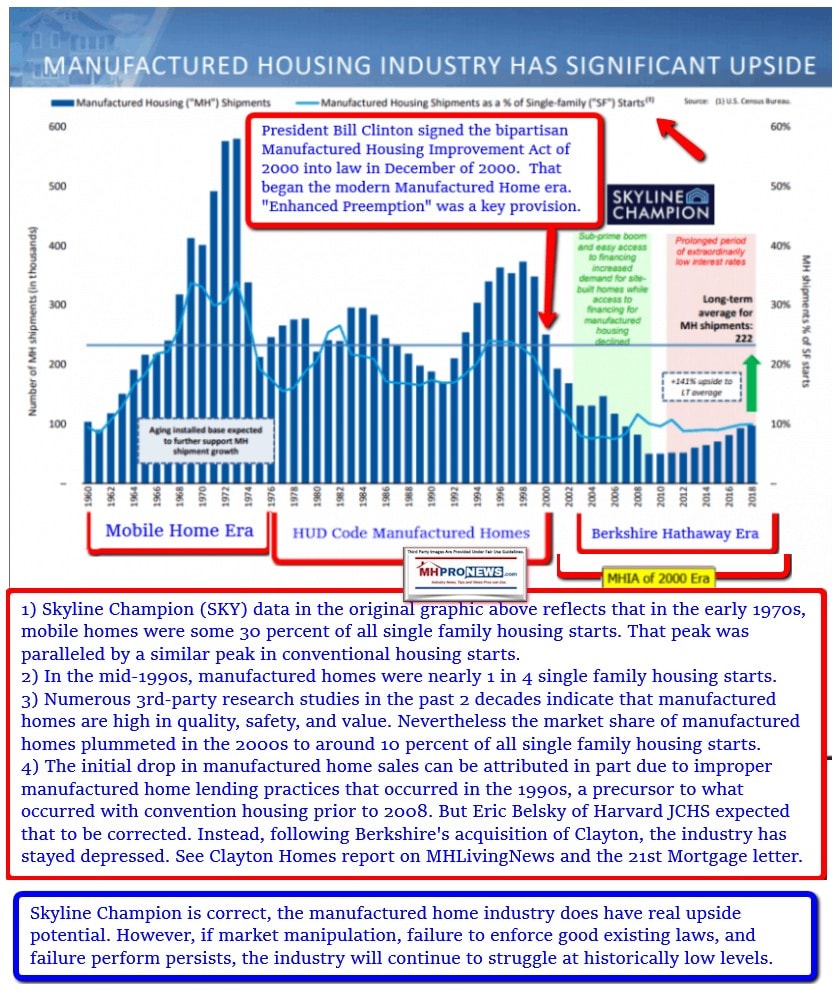
You can examine the controversies attached to several of these corporate leaders, starting with the new report linked above.
But other recent reports like the one linked above and below also shed light on how the ‘game is played’ in Arlington, VA and at the respective corporate base of operations of the most powerful MHI members.
If common sense were more common, courage and long-range thinking were more routine, the MHARR news release above encouraging a new post-production trade association would not be necessary.
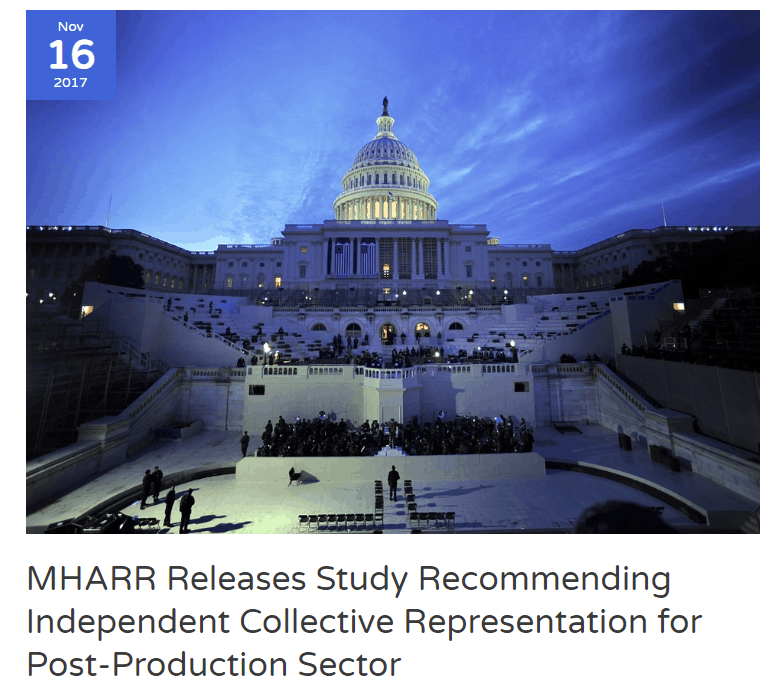
Alice Sparks, SSK Communities Partner, Dies Amidst Flagship Communities IPO Controversies
Never forget that in the pre-Berkshire Hathaway era, MHARR and MHI were working together to enact the Manufactured Housing Improvement Act of 2000.
Much has changed since the Berkshire Hathaway era of manufactured housing began, and Clayton Homes and their Berkshire Hathaway owned affiliates and allies began to flex their muscles. It is simply a fact that the industry has never grown beyond its production and shipping – which is to say, new home sales levels – since Warren Buffett led Berkshire made the deal to take over Clayton and their affiliated lending.
The powers that be behind the MHI trade group are clearly happy with the status quo, or they would terminate several top MHI staffers. As one source put it, MHI leaders lie, independent businesses die.
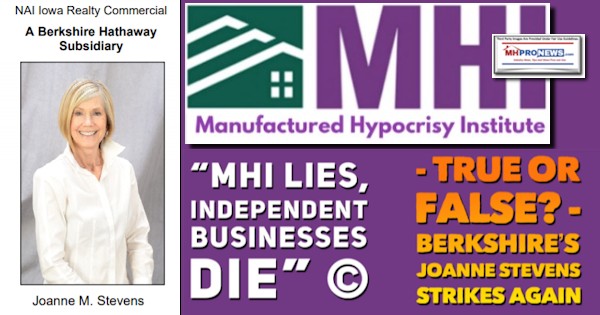
Despite the bravado and to-date unkept promise of Tim Williams at the Ohio Manufactured Home Association, or Amy Bliss, other MHI affiliates, mouthpieces, or MHI leaders themselves, the only party willing to publicly debate the issues to date has been Andy Gedo. That strongly suggests that MHI and their leaders know that they would be embarrassed and lose any public debate.
Therefor, the evidence-based thesis advanced by MHProNews therefor has been amply demonstrated and remains intact.
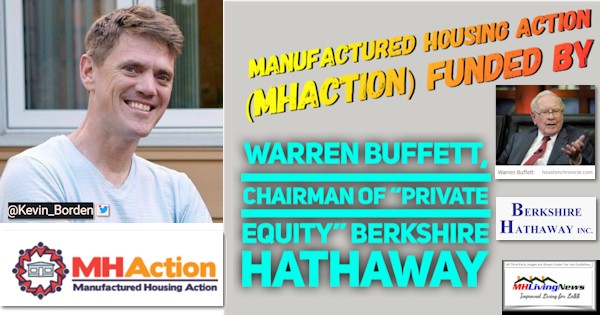
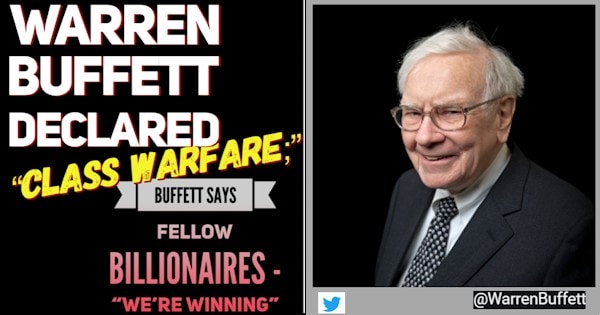
MHI CEO Dick Jennison’s Pledge – 500,000 New Manufactured Home Shipments
Errata
MHProNews notes that it previously erred in the date of President’s Trump event at the Villages, a mixed use community that includes manufactured, modular, and other factory-built as well as conventional housing. We regret the error. The event was well attended, and included a golf-cart-parade in support of President Trump. Well informed consumers and professionals support the president by the millions.
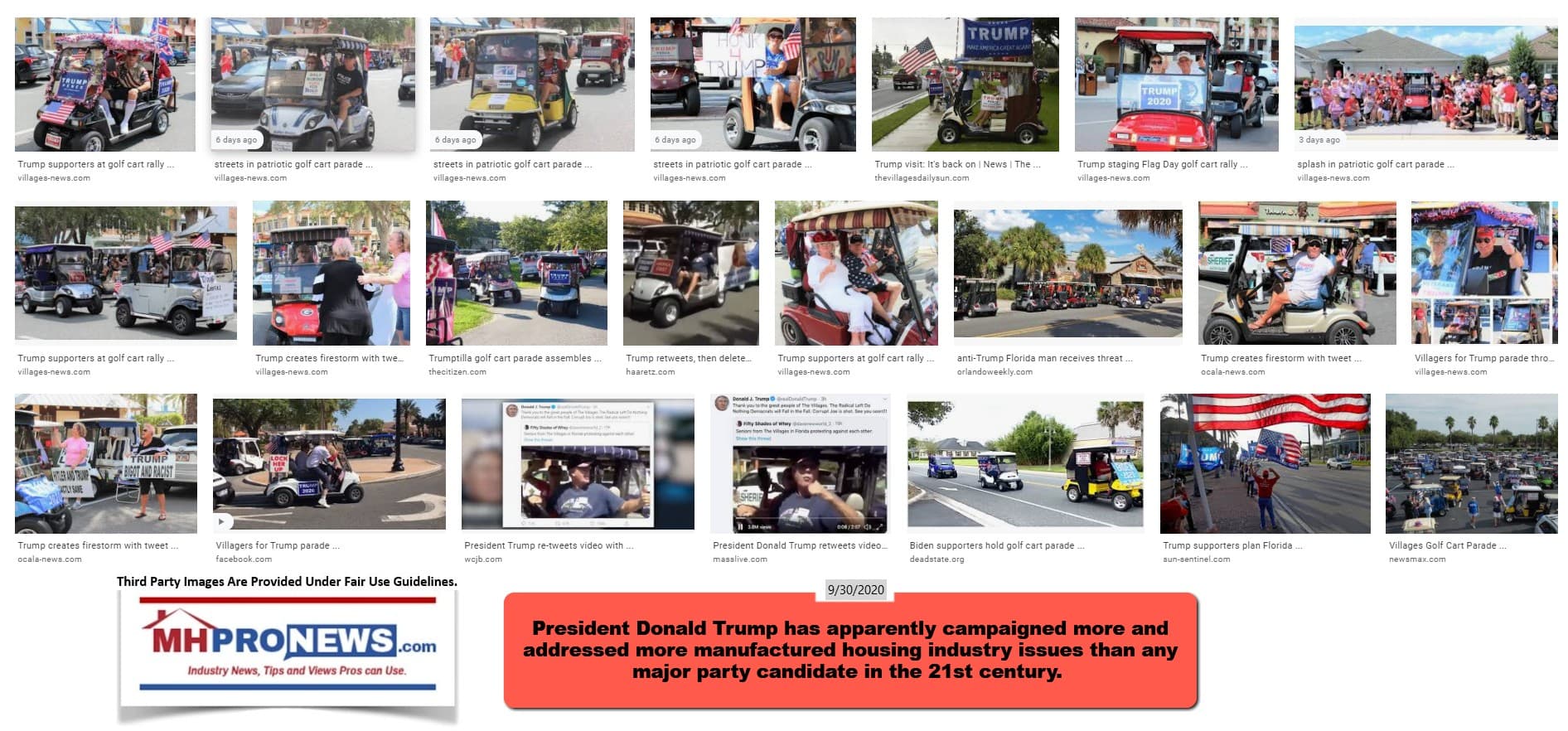
To follow up on the presidential aspects of the challenges facing manufactured housing. There is no president in the 21st century that has taken on the “establishment” of both the Republican and Democratic parties as has candidate-turned President Trump. The Republican Party today is quite different than it was just 5 years ago. The GOP has become increasingly a worker, middle class and retirees political party.
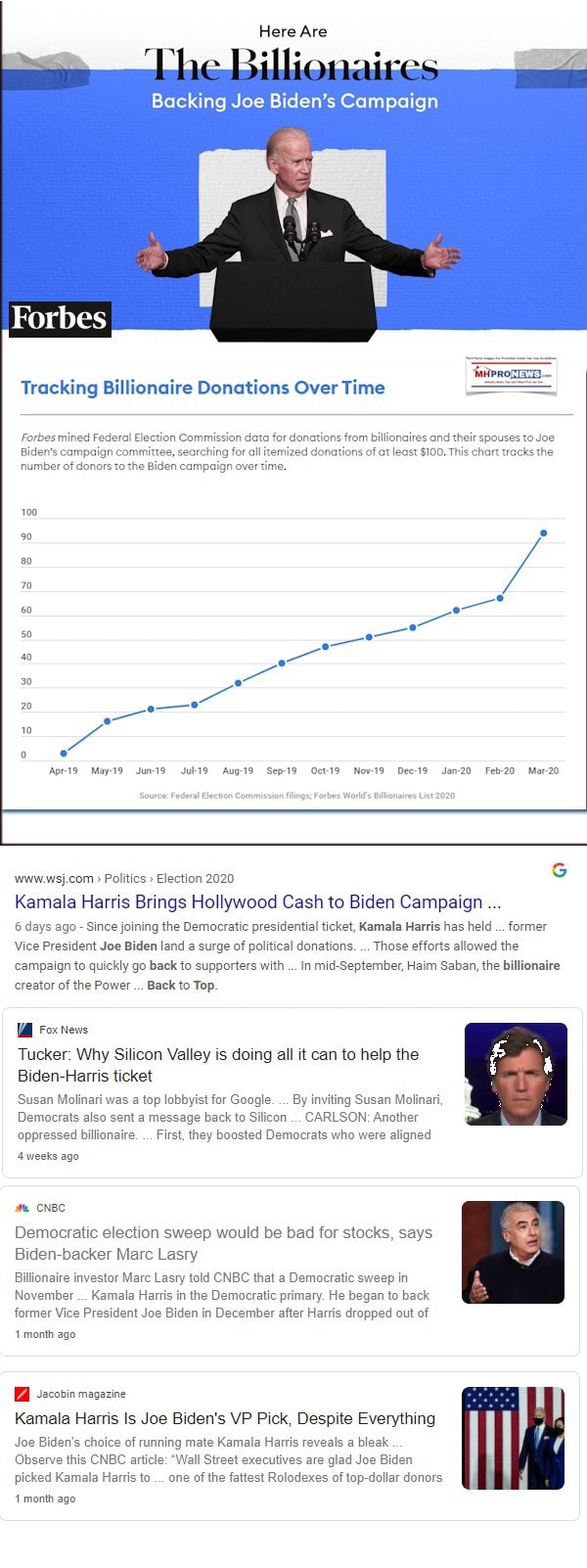
As political independents, MHProNews notes in contrast that the Democratic Party is getting the backing of Wall Street and most of the top billionaires.
That speaks volumes. To learn more about these various issues, see the related reports above and further below.

There is always more to know. Stay tuned with the runaway largest and documented number one most-read source for authentic manufactured home “Industry News, Tips, and Views Pros Can Use” © where “We Provide, You Decide.” © ## (Affordable housing, manufactured homes, reports, fact-checks, analysis, and commentary. Third-party images or content are provided under fair use guidelines for media.) (See Related Reports, further below. Text/image boxes often are hot-linked to other reports that can be access by clicking on them.)

By L.A. “Tony” Kovach – for MHProNews.com.
Tony earned a journalism scholarship and earned numerous awards in history and in manufactured housing.
For example, he earned the prestigious Lottinville Award in history from the University of Oklahoma, where he studied history and business management. He’s a managing member and co-founder of LifeStyle Factory Homes, LLC, the parent company to MHProNews, and MHLivingNews.com.
This article reflects the LLC’s and/or the writer’s position, and may or may not reflect the views of sponsors or supporters.
Connect on LinkedIn: http://www.linkedin.com/in/latonykovach
Related References:
The text/image boxes below are linked to other reports, which can be accessed by clicking on them.
Alice Sparks, SSK Communities Partner, Dies Amidst Flagship Communities IPO Controversies
Manufactured Housing Lending 2020 Re-Examination – FEDs, Lenders, and Advocates
Nathan & Mary Lee Chance Smith, Leaders in ‘Anti-Trump Resistance,’ Manufactured Housing Impact?
Manufactured Housing Institute Warns Members – Pondering Legal Action, Insider Insights
